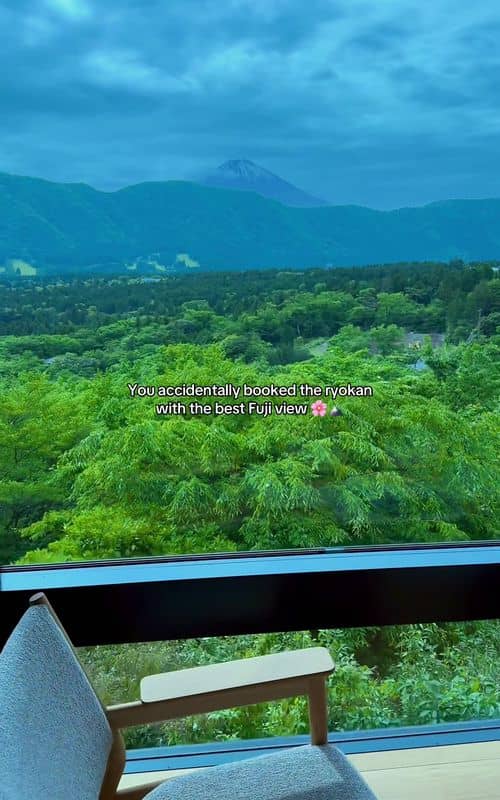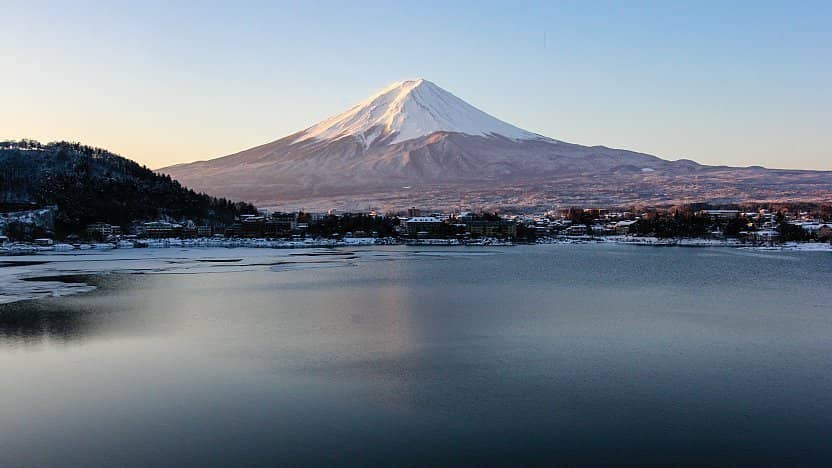Hakone Tozan Cable Car
Ride a historic funicular through mountains, over volcanic valleys, and across a lake for iconic Mt. Fuji views.

Highlights
Must-see attractions

Social
From TikTok & Reddit
Best Time
Fewer crowds, better views
Hakone Tozan Cable Car
Best Time
Fewer crowds, better views

Highlights
Must-see attractions
Ride a historic funicular through mountains, over volcanic valleys, and across a lake for iconic Mt. Fuji views.
"The Hakone Loop is an unforgettable journey through Japan's stunning natural beauty and unique transport."
🎯 Get the Hakone Free Pass
Covers most transport on the loop, saving money and hassle.
☁️ Check Fuji Visibility
Clear days are essential for iconic Mt. Fuji views.
Highlights
Discover the most iconic attractions and experiences
Scenic Ascent
Gora to Sounzan
Ride this historic funicular through lush forests, offering breathtaking mountain vistas.

Volcanic Vistas
Sounzan to Owakudani
Connect to the Hakone Ropeway for a thrilling ride over the active volcanic valley of Owakudani.

Mt. Fuji Views
Various points along the loop
On clear days, catch unforgettable glimpses of Japan's majestic Mount Fuji.
Plans like a pro.
Thinks like you
Planning Your Visit
Hakone Free Pass is Key
Timing is Everything for Views
Best Times
Insider Tips
from TikTok, Instagram & Reddit
🎯 Get the Hakone Free Pass
Covers most transport on the loop, saving money and hassle.
☁️ Check Fuji Visibility
Clear days are essential for iconic Mt. Fuji views.
👟 Wear Comfortable Shoes
You'll be doing a lot of walking and transferring between transport.
⏳ Allow Ample Time
The Hakone Loop can take a full day, especially with stops.
Tips
from all over the internet
🎯 Get the Hakone Free Pass
Covers most transport on the loop, saving money and hassle.
☁️ Check Fuji Visibility
Clear days are essential for iconic Mt. Fuji views.
👟 Wear Comfortable Shoes
You'll be doing a lot of walking and transferring between transport.
⏳ Allow Ample Time
The Hakone Loop can take a full day, especially with stops.
🍜 Try Local Snacks
Don't miss unique treats like black eggs in Owakudani.
What Travellers Say
Reviews Summary
Visitors rave about the stunning natural scenery, the unique transportation options like the cable car and ropeway, and the chance to see Mt. Fuji. The relaxing onsen experiences and traditional ryokan stays are also highly praised. Some find the loop can be crowded and weather-dependent for optimal views.
What People Like
What People Dislike
Frequently Asked Questions
🚇 🗺️ Getting There
The easiest way is to take the Odakyu Romancecar from Shinjuku Station directly to Hakone-Yumoto. Alternatively, you can take the Shinkansen to Odawara and then transfer to local transport.
Yes, the Hakone Loop is well-signposted, and purchasing the Hakone Free Pass makes navigating the various modes of transport straightforward.
Absolutely! Hakone is a popular day trip destination from Tokyo, offering a refreshing escape with its natural beauty and cultural sites.
The Hakone Free Pass covers the Hakone Tozan Train, Cable Car, Ropeway, and Sightseeing Cruise, making it the most convenient and cost-effective way to explore.
The Hakone Loop typically takes a full day, around 6-8 hours, depending on how long you spend at each attraction and transfer times.
🎫 🎫 Tickets & Entry
You can purchase the Hakone Free Pass online through platforms like Klook, or at major Odakyu stations such as Shinjuku, or at Hakone-Yumoto Station.
Prices vary depending on the duration (2-day or 3-day pass) and point of purchase, but it generally offers significant savings compared to individual tickets. Check the official Hakone Navi website for current pricing.
The pass covers most essential transport for the Hakone Loop, including the Hakone Tozan Train, Cable Car, Ropeway, and Sightseeing Cruise, as well as many local buses.
While the Hakone Free Pass covers transportation, some museums and attractions within Hakone, like the Hakone Open-Air Museum, have separate entrance fees.
The Japan Rail Pass does not cover the Odakyu Romancecar or most local transport within Hakone. It's best used for travel to Odawara or Hakone-Yumoto.
🎫 🏞️ Onsite Experience
The Hakone Tozan Cable Car is a funicular railway that connects Gora Station to Sounzan Station, offering scenic views as it ascends the mountainside. It's a key part of the Hakone Loop.
You'll enjoy panoramic views of the surrounding mountains, lush forests, and on clear days, glimpses of Mount Fuji.
Owakudani is an active volcanic valley known for its hot springs and sulfurous fumes. It's famous for its 'black eggs,' which are boiled in the hot springs and said to prolong life.
The best views of Mt. Fuji are typically from the Hakone Ropeway, the Sightseeing Cruise on Lake Ashi, and various viewpoints along the loop on clear days.
Key attractions include the Hakone Open-Air Museum, Hakone Shrine with its iconic torii gate in Lake Ashi, Owakudani volcanic valley, and the beautiful Lake Ashi itself.
🍽️ 🍜 Food & Dining
Hakone is famous for its onsen (hot springs) and ryokan (traditional inns) offering kaiseki (multi-course) meals. Don't miss the black eggs from Owakudani!
Yes, Hakone offers a range of dining options, from casual eateries serving local specialties to high-end restaurants in ryokans offering exquisite Japanese cuisine.
These are eggs boiled in the sulfurous hot springs of Owakudani. The minerals turn the shells black, and they are believed to add seven years to your life.
While traditional Japanese cuisine can be meat and fish-heavy, many restaurants, especially in tourist areas and ryokans, can accommodate vegetarian requests if informed in advance.
Kaiseki is a traditional multi-course Japanese dinner, often served at ryokans. It's an artful presentation of seasonal ingredients and local flavors.
📸 📸 Photography
Iconic spots include the Hakone Shrine's torii gate in Lake Ashi, the volcanic landscapes of Owakudani, panoramic views from the ropeway, and the charming stations along the Hakone Tozan Railway.
Yes, on clear days, Mt. Fuji is visible from several points in Hakone, offering spectacular photo opportunities. The Hakone Ropeway and Lake Ashi are prime locations.
A versatile lens (like a 24-70mm equivalent) is great for landscapes and general shots. A wide-angle lens can capture the vastness of the volcanic areas, and a telephoto can help isolate Mt. Fuji.
Early mornings and late afternoons often provide the best light for photography, with softer shadows and warmer tones. Golden hour can be magical.
Generally, photography is allowed in most public areas. However, always be mindful of private property and any specific signage at attractions.
For Different Travelers
Tailored advice for your travel style
👨👩👧 Families with Kids
Consider purchasing the Hakone Free Pass for easy travel and access to various attractions. The Hakone Open-Air Museum is also a hit with families, featuring large sculptures that kids can interact with and explore. Pack comfortable shoes, as there will be walking involved, and be prepared for varying weather conditions.
💰 Budget Travelers
While staying in a traditional ryokan can be expensive, look for guesthouses or budget-friendly hotels in areas like Hakone-Yumoto or Gora. Many offer simpler accommodations that still provide a comfortable base for exploring. Consider visiting during the shoulder seasons (spring or autumn, avoiding major holidays) for potentially lower accommodation prices.
💖 Couples & Romantic Getaways
Enjoy a leisurely Hakone Sightseeing Cruise on Lake Ashi, perhaps during sunset for added romance. Explore the art installations at the Hakone Open-Air Museum hand-in-hand. For a unique experience, consider visiting during autumn to witness the vibrant foliage painting the mountainsides in warm hues.
Deep Dives
In-depth insights and expert knowledge
The Hakone Loop: A Journey Through Nature and Culture
At Sounzan, the adventure continues with the Hakone Ropeway, offering breathtaking aerial views as it glides over the active volcanic hot springs of Owakudani. Here, you can witness the steaming vents and try the famous black eggs. The ropeway then descends to Togendai, where you can board the Hakone Sightseeing Cruise (often on a pirate ship replica!) across Lake Ashi. This cruise provides stunning views of the surrounding mountains and, on clear days, the iconic Mount Fuji. The loop concludes with a bus ride back to Hakone-Yumoto or other key points.
Many visitors opt for the Hakone Free Pass, which covers unlimited rides on all these modes of transport, plus local buses and even discounts at some attractions. This pass simplifies the journey significantly and is highly recommended for anyone planning to tackle the loop. Planning your route and checking the operating times for each segment is advisable to make the most of your day.
Experiencing Hakone's Onsen and Ryokan Culture
Popular ryokans often boast private onsen baths, providing an intimate and luxurious experience. Some even offer rooms with direct access to these soothing hot springs. The kaiseki meals served at ryokans are a highlight, featuring beautifully presented, seasonal dishes that showcase local ingredients and culinary artistry. This dining experience is often described as a feast for both the eyes and the palate.
For those on a day trip or looking for a shorter onsen experience, many ryokans and public bathhouses offer day-use options. This allows visitors to enjoy the therapeutic benefits of Hakone's hot springs without an overnight stay. Booking in advance is highly recommended, especially for popular ryokans or during peak seasons, to secure your preferred dates and room types.
Capturing the Magic: Photography in Hakone
The Hakone Tozan Cable Car and Hakone Tozan Train offer charming perspectives of the lush forests and quaint stations as they ascend the mountains. The iconic Hakone Shrine with its torii gate standing in Lake Ashi is a must-capture shot, especially during sunrise or sunset when the light is soft and atmospheric. Don't forget to capture the unique zigzag design of the cable car and the diverse modes of transport that make up the Hakone Loop.
When planning your photography, consider the weather, as clouds can obscure Mt. Fuji. Early mornings and late afternoons often provide the best lighting conditions. A versatile lens setup will allow you to capture both expansive landscapes and detailed shots of the unique transportation systems and cultural sites.

Social
from TikTok, Instagram & Reddit